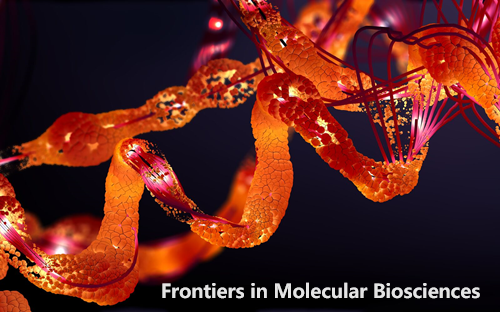糖尿病黄斑水肿的神经血管耦合相关生物标记物的鉴定和机理分析
IF 3.9
3区 生物学
Q2 BIOCHEMISTRY & MOLECULAR BIOLOGY
引用次数: 0
摘要
导言糖尿病黄斑水肿(DME)是糖尿病视网膜病变患者视力丧失的主要原因。DME 的发生与神经血管耦合的破坏密切相关,但其潜在机制尚未完全阐明。本研究旨在探讨与 DME 神经血管耦合相关的诊断性生物标志物和潜在的分子机制。方法从 GSE160306 中进行差异表达分析、STEM 和 WGCNA,以确定枢纽基因。通过 RT-qPCR 验证了基因的表达。通过 GO、KEGG 和 GSEA 分析以及共表达网络,研究了相关的作用机制。此外,还使用了 LASSO 回归分析和提名图来证明模型的诊断效果。结果神经营养因子受体(NGFR)被确定为与神经血管耦合和 DME 相关的枢纽基因。通过 RT-qPCR 验证了 NGFR 在体外细胞中的表达。GSEA分析表明,NGFR的高表达可能会影响免疫和炎症通路,从而调节神经血管耦合并介导DME的发生。构建的NGFR共表达网络显示了其与神经营养素信号通路的相关性。此外,利用LASSO回归分析和提名图,基于NGFR和PREX1的DME诊断模型显示出了相对较好的诊断性能。结论 NGFR的高表达可能导致神经血管耦合异常,并通过调节免疫、炎症和神经营养素信号通路参与DME的发生。检测NGFR及相关表达基因可能有助于监测DME的发生和发展。本文章由计算机程序翻译,如有差异,请以英文原文为准。
Identification and mechanistic analysis of neurovascular coupling related biomarkers for diabetic macular edema
IntroductionDiabetic macular edema (DME) is a major cause of vision loss in the sick with diabetic retinopathy. The occurrence of DME is closely related to the breakdown of neurovascular coupling; however, its underlying mechanism has not been fully elucidated. The aim of this study was to investigate the diagnostic biomarkers and potential molecular mechanisms associated with neurovascular coupling in DME.MethodsThe differential expression analysis, STEM, and WGCNA were performed from GSE160306 to identify hub genes. The gene expression was validated by RT-qPCR. The relevant mechanisms of action were investigated through GO, KEGG, and GSEA analyses, as well as co-expression networks. Additionally, the LASSO regression analysis and a nomogram were used to demonstrate the diagnostic effectiveness of the model. Finally, the GenDoma platform was utilized to identify drugs with potential therapeutic effects on DME.ResultsNeurotrophic factor receptor (NGFR) was identified as a hub gene related to neurovascular coupling and DME. The expression of NGFR was verified by RT-qPCR in vitro cells. GSEA analysis indicated that high expression of NGFR may affect immunity and inflammatory pathway, thereby regulating neurovascular coupling and mediating the development of DME. The NGFR co-expression network was constructed, which exhibited the correlation with the neurotrophin signaling pathway. Moreover, a diagnostic model for DME based on NGFR and PREX1 demonstrated relatively good diagnostic performance using LASSO regression analysis and the nomogram. And then the GenDoma platform identified drugs with potential therapeutic effects on DME.ConclusionThe high expression of NGFR may lead to abnormal neurovascular coupling and participate in the occurrence of DME by regulating the immunity, inflammatory and neurotrophin signaling pathway. Detection of NGFR and related expression genes may be beneficial for monitoring the occurrence and development of DME.
求助全文
通过发布文献求助,成功后即可免费获取论文全文。
去求助
来源期刊

Frontiers in Molecular Biosciences
Biochemistry, Genetics and Molecular Biology-Biochemistry
CiteScore
7.20
自引率
4.00%
发文量
1361
审稿时长
14 weeks
期刊介绍:
Much of contemporary investigation in the life sciences is devoted to the molecular-scale understanding of the relationships between genes and the environment — in particular, dynamic alterations in the levels, modifications, and interactions of cellular effectors, including proteins. Frontiers in Molecular Biosciences offers an international publication platform for basic as well as applied research; we encourage contributions spanning both established and emerging areas of biology. To this end, the journal draws from empirical disciplines such as structural biology, enzymology, biochemistry, and biophysics, capitalizing as well on the technological advancements that have enabled metabolomics and proteomics measurements in massively parallel throughput, and the development of robust and innovative computational biology strategies. We also recognize influences from medicine and technology, welcoming studies in molecular genetics, molecular diagnostics and therapeutics, and nanotechnology.
Our ultimate objective is the comprehensive illustration of the molecular mechanisms regulating proteins, nucleic acids, carbohydrates, lipids, and small metabolites in organisms across all branches of life.
In addition to interesting new findings, techniques, and applications, Frontiers in Molecular Biosciences will consider new testable hypotheses to inspire different perspectives and stimulate scientific dialogue. The integration of in silico, in vitro, and in vivo approaches will benefit endeavors across all domains of the life sciences.
 求助内容:
求助内容: 应助结果提醒方式:
应助结果提醒方式:


